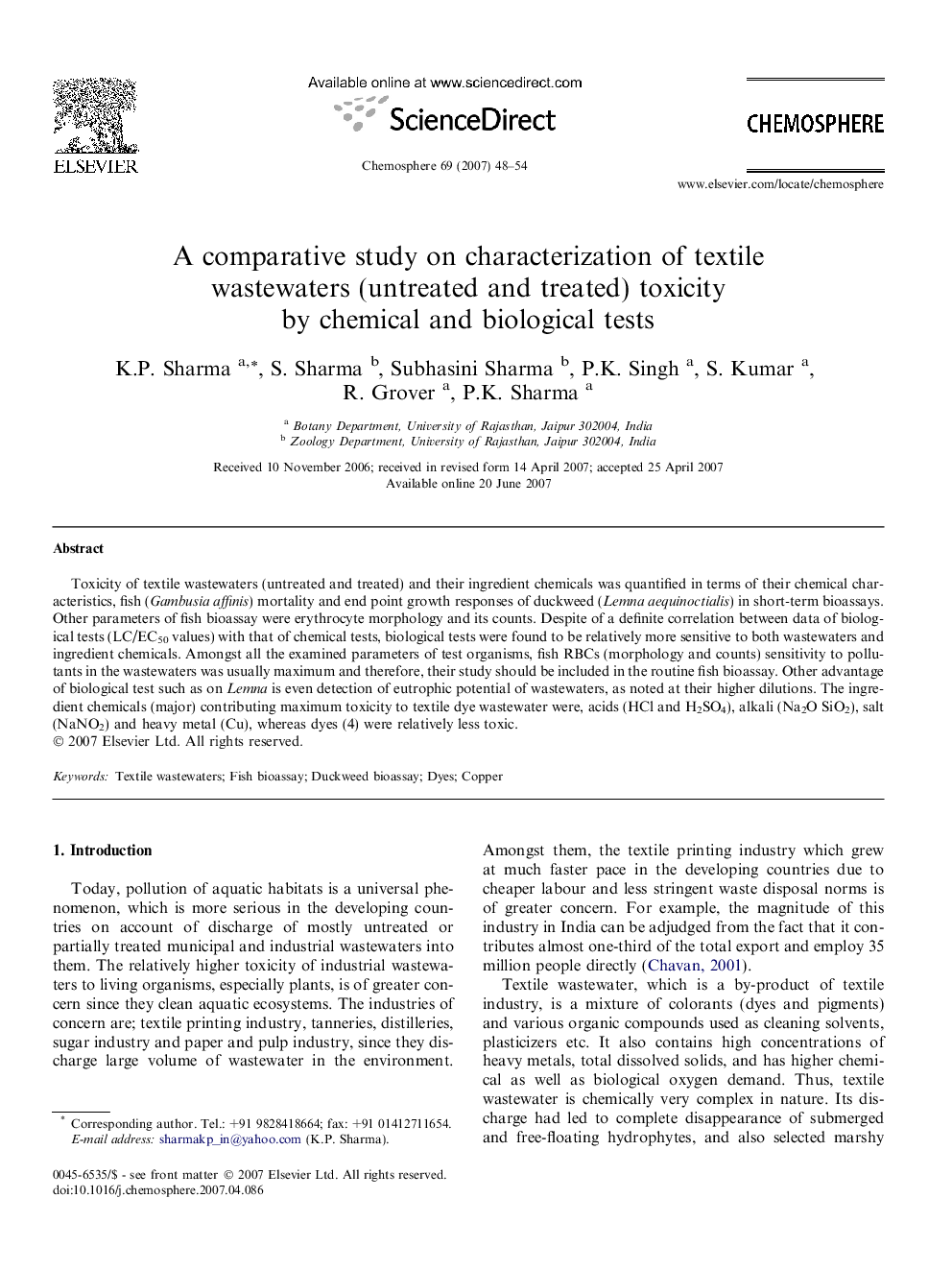| Article ID | Journal | Published Year | Pages | File Type |
|---|---|---|---|---|
| 4415040 | Chemosphere | 2007 | 7 Pages |
Toxicity of textile wastewaters (untreated and treated) and their ingredient chemicals was quantified in terms of their chemical characteristics, fish (Gambusia affinis) mortality and end point growth responses of duckweed (Lemna aequinoctialis) in short-term bioassays. Other parameters of fish bioassay were erythrocyte morphology and its counts. Despite of a definite correlation between data of biological tests (LC/EC50 values) with that of chemical tests, biological tests were found to be relatively more sensitive to both wastewaters and ingredient chemicals. Amongst all the examined parameters of test organisms, fish RBCs (morphology and counts) sensitivity to pollutants in the wastewaters was usually maximum and therefore, their study should be included in the routine fish bioassay. Other advantage of biological test such as on Lemna is even detection of eutrophic potential of wastewaters, as noted at their higher dilutions. The ingredient chemicals (major) contributing maximum toxicity to textile dye wastewater were, acids (HCl and H2SO4), alkali (Na2O SiO2), salt (NaNO2) and heavy metal (Cu), whereas dyes (4) were relatively less toxic.
